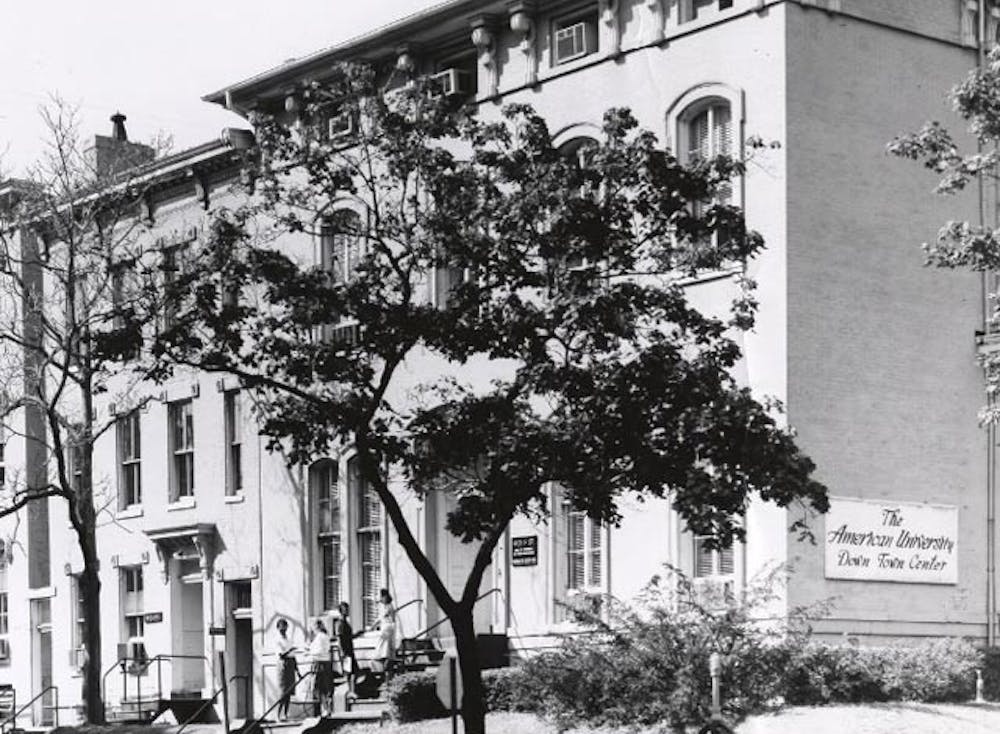According to Tenleytown Historical Society, the land that American University exists on today was formerly “owned” in 1713 by Colonel Thomas Addison. Through multiple generations, Addison passed on a portion of 800 acres of land, known as Friendship tract, to William David Clark (W.D.C.) Murdock. Murdock lived from 1806 until 1886, according to his tombstone. In the 1850 United Federal Census, Murdock lists himself as a farmer. According to the Enslaved Persons in 1855-1862 Tax Assessments of Washington County, D.C., now named Washington, D.C, Murdock owned approximately 10 slaves by the names of William Hutchinson, John, George, Henry, Mary, Martha, Frank, Theodore, Margaret and Ellen Lee.
Each name lists their respective worth in U.S. dollars alongside other property owned by Murdock. These African-Americans were some of the first residents of the land that American University rests on today.
Decades later, after slavery had been legally abolished in D.C. and the nation in 1862 and 1863 respectively, Bishop John Fletcher Hurst, former slave owner, arrived at the United Methodist Church in Washington, D.C. He was tasked with founding a Methodist-based university for graduate studies. His story can be read here. Despite petitions, Hurst’s belief in education for all and personal regret for his prior treatment of Blacks, Hurst founded the University as a whites-only institution, without any explicit integration policy, in 1893.
American University opened as an institution for graduate-level education. In May of 1915, the AU Board of Trustees confirmed its first class of graduate fellows. One of the fellows was John Wesley Edwards Bowen Jr., an African-American. However, official policy remains unclear on whether the University was to be an integrated institution as a matter of university policy. At some point, the University seemed to operate an unofficial back-door policy which is structurally similar to restaurants in which Blacks were allowed receive food from the back-door.
Twenty-one years later in 1936, the University’s graduate board endorsed a color-blind policy for School of Social Sciences and Public Affairs. However, members of University leadership and community members seemed unaware that Blacks were allowed according to correspondence within university archives. The case of Thelma D. Perry (her last name was Ackiss when she applied to the University) demonstrates this point. Perry passed away Nov. 25, 2000; she is survived by family and her work completed working in higher academia and the Negro History Bulletin.
In July of 1944, Ackiss, a Black woman who had already earned her B.A., LL.B. and M.A degrees, voiced her desire to study history at American University. She formally asked then Dean Griffith, according to the original letter stored in University Archives. (The Eagle could not locate Griffith’s first name.) The proposal of integration received immediate pushback from community institutions, community members and members of the Board of Trustees, particularly former Trustee F. Murray Benson and Joseph Gray, former chancellor of AU. Murray advocated strongly against racial integration to President Paul Douglass, then the school’s president. According to correspondence held in university archives, receiving notification from Griffith, Gray, former administrative head of American University, responded immediately saying “of course, you will reject her.”
In August of 1944, African-Americans comprised 3 percent of the student body in the School of Social Sciences and Public Affairs (SPA). For reference: As of fall 2017, African-Americans comprise about 9 percent of the undergraduate population at AU, according to the Inclusive Excellence Plan.
Following the addition of undergraduate studies and full integration of the university, the University Archive contains binders full of racial incidents involving issues like a white supremacist organization targeting black students, campus climate discontent amongst black students and university administrators reporting instances of interracial dating. Black student leaders frequently found themselves confronting university administrators on a wide range of issues.
In the early 2000s, students complained of racial profiling with one instance of a shuttle bus driver improperly asking for identification of a black student. In my time, Black students have faced nooses, confederate flags, threats via Yik-Yak, an anonymous social media app (similar to Jolt incident years before) and even threats to personal security. The issue of race effortlessly spans across university presidencies.
With numerous diversity and inclusion efforts like the former office of Multicultural Affairs, then- Provost Neil Kerwin’s 1999 Diversity Report and later President Kerwin’s five-point diversity and inclusion plan, the University has continually found itself face to face with one issue: its racial climate. The latest take is AU’s Inclusive Excellence Plan, which contains the very same sentiments of past efforts that appealed to this “just out of reach” inclusive community.
The plan is comprehensive and the product of sincere engagement across factions of the university community. It, however, does not acknowledge the full history, the full struggle, that Black students endured. Namely, American University’s problematic racial climate did not begin in 2017 as the plan seems to suggest. It can be traced as far as 1893. Without acknowledging this, the plan sends half of the black experience out the same way it came in, the back door of American University. Recognizing this history is not only validating, but serves the purpose of mobilizing the community toward continued and further progress. Increased attention to community need not come at the expense of preserving the history of the Black struggle.
There’s very little that is novel about the plan that hasn’t been pushed before actually or symbolically by the tears, sweat and sentiments of Black AU community members. What is new is the agency, energy and emphasis of community through which we can achieve progress. It is my sincere hope and desire to see out that this plan makes considerable forward progress on the issue of racial climate, combined with community efforts from fellow students, staff and faculty.
I believe that our first communal step must start from the beginning. I urge all interested to involve themselves in the Working Group dedicated to researching the founding of the University and its relationship to the institution of slavery. It was created in response to my previous op-Ed, of which I refer to as the Ellen Lee Project.
After this, we might move forward to creating a racial chronology, comprised of regression as well as positive progress, to better inform our community’s continued journey on bettering its racial climate. Appropriately, that effort ought to be dedicated in honor of Ackiss, a black woman who forced administrators to integrate the university.
AU’s racial history is ripe for further research, exploration and guidance. It is abundantly clear that our AU community will never know where it is headed if it doesn’t know where it is coming from. Like university presidents before her, Burwell pitched a future community in her inaugural speech, a community that lives up to our core values. That future community belongs to the AU community members who urgently pursue good institutions over good intentions. It is important to remember that, despite the transience of our academic community, we are not solely commentators on our racial climate, but rather its chief architects for our current community and its scholars to come.
Editor’s Note: The following is a continuation of the previous article on the slave-owning past of Bishop John Fletcher Hurst, American University’s founder. It can be read here. This piece is not intended to substitute for a comprehensive racial chronology of American University.
Nickolaus Mack is a junior in the School of Public Affairs and School of International Service. He is The Eagle’s managing editor for opinion.





